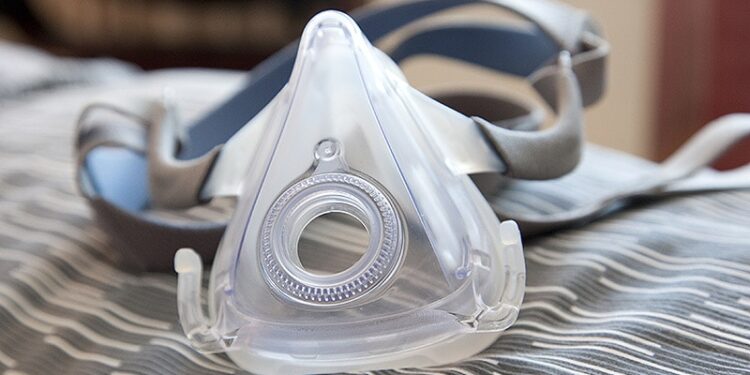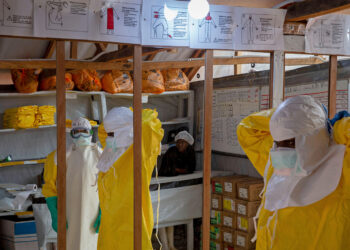More patients with chronic obstructive pulmonary disease (COPD) who suffer from chronic respiratory failure will have insurance coverage for at-home devices, according to a new coverage decision from the Centers for Medicare & Medicaid Services (CMS).
The national coverage decision was published online on the CMS website. CMS will cover respiratory assist devices (RADs) and home mechanical ventilators for patients who meet certain criteria specified in the decision memo.
The new decision includes coverage for an initial 6-month period for patients who meet the criteria for chronic respiratory failure (hypercapnia). Patients must be evaluated at least twice within the first year after they initially receive a RAD, and ongoing coverage is contingent on meeting criteria for a consistent level of use associated with improved symptoms such as fatigue, headache, shortness of breath, confusion, and sleep quality.
Patients must be evaluated at least twice within the first year after initially receiving an RAD. Evaluations must occur by the end of the 6-month initial coverage period and again during months 7-12.
The decision was based in part on the latest version of a document created by the COPD Technical Expert Panel working group. In the report, published online in Chest in 2021, the working group members outlined recommendations for when noninvasive ventilation (NIV) is warranted for patients with COPD and how to improve access to home devices.
The working group called for simplified diagnostic requirements, including eliminating overnight oximetry testing, allowing initiation of therapy with bi-level devices with backup rate capability, and extending the length of time for patients to meet adherence criteria. “Adoption of these proposed recommendations would result in the right device for the right type of patient with COPD at the right time,” the authors wrote.
Coverage at Last
For members of the COPD Technical Expert Panel working group, the decision was a long time coming. “We have been going at this for five decades,” said co-author Gerard J. Criner, MD, of Temple University, Philadelphia, in an interview.
When experts first created a report advocating for CMS coverage of NIV for COPD, obstacles included a need for patients to undergo sleep studies, Criner noted. Also, some patients had to be discharged home with ventilation devices to use in spontaneous mode and fail with it before a home ventilation device would be covered, he said.
The experts issued their most recent report in 2021, and it was published online in Chest.
“To our surprise, the CMS listened,” Criner said. However, the report is more applicable to clinical practice now than in previous years because of advances in technology,” he noted. Patients who need more alarms and support can get more advanced options, and the use of home-based devices can consequently have a greater impact on clinical practice, he said.
Persistent barriers to the use and coverage of home-based NIV for COPD include issues of compliance on the part of the patients and physicians, as patients must be compliant with device use, and physicians must document it with periodic assessments, such as every 6 months, Criner noted.
However, the bottom line is to not overtreat patients with COPD with these devices, said Criner. “We don’t want patients to get treated with a device that doesn’t give them benefits,” he said. The impact of the new coverage has yet to be seen, but for those who can benefit, the effects will likely be significant, he said.
Clinical Implications of Clarified Coverage
“Many health systems are not equipped to initiate and follow up patients on RADs,” said Arianne Baldomero, MD, assistant professor of medicine at the University of Minnesota, Minneapolis, in an interview. The coverage decision will require healthcare systems to come up with an implementation plan that will include assessment of patient eligibility, device setup and follow-up, comprehensive clinical documentation, care coordination with durable medical equipment (DME) providers, staff and patient education, and establishment of protocols for ongoing monitoring and compliance with CMS requirements, she said.
“Barriers to expanding home-based ventilation may include, but are not limited to, lack of trained personnel and infrastructure, caregiver burden, and limited patient or family understanding of the therapy,” Baldomero told Medscape Medical News. However, investing in staff training, providing comprehensive patient and caregiver education, improving care coordination, and leveraging telehealth and community resources could help overcome these barriers, she said. “Clear communication about coverage and streamlined processes will also help patients take advantage of these benefits,” she added.
Looking ahead, more research is needed to determine the most effective implementation strategies for this new CMS decision, particularly in underserved rural areas where access to specialized care and DME is limited, said Baldomero. “Studies should evaluate telehealth models, community-based partnerships, and simplified care pathways to ensure equitable access and adherence,” she noted.
Baldomero had no financial conflicts to disclose.
Source link : https://www.medscape.com/viewarticle/cms-will-cover-home-ventilators-2025a1000hi0?src=rss
Author :
Publish date : 2025-07-01 11:10:00
Copyright for syndicated content belongs to the linked Source.









